If you’re planning a safari, visualizing your journey on a map can turn your travel plans into an interactive and shareable experience. From visiting to all safari locations and back, mapping your safari helps you track routes, highlight wildlife hotspots, and organize activities. Using MAPOG, you can create a rich safari itinerary map that’s engaging, interactive, and easy to share with friends, family, or followers.
Key Concept: Why create Safari Itinerary Map?
Creating a Safari Itinerary Map isn’t just about showing locations—it’s about planning, documenting, and sharing your adventure. An interactive safari map allows you to:
- Visualize Your Route: To begin with, track daily legs from one location to another, and finally head back.
- Highlight Key Spots: In addition, pin sites so that your map captures every highlight.
- Add Multimedia and Notes: Moreover, attach photos, and activity details to each stop, which makes your safari itinerary more engaging.
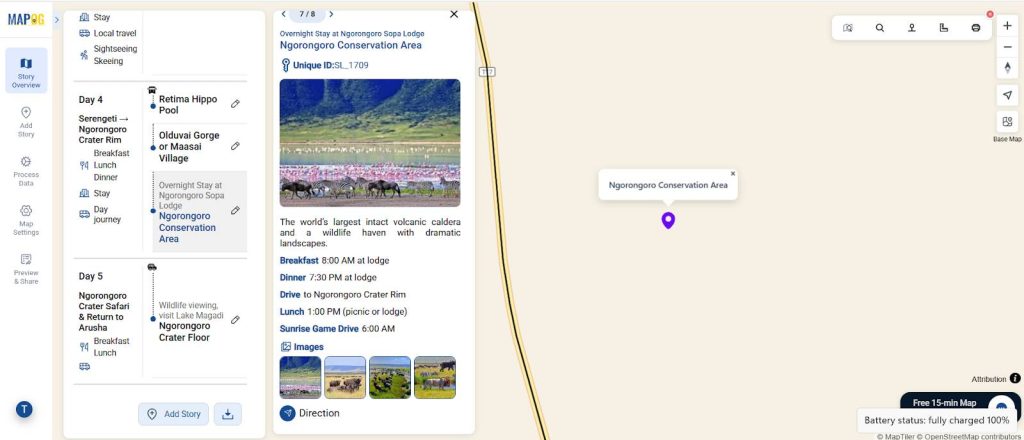
Step-by-Step: How to create Safari Itinerary Map
1. Start Your Map
First, open MAPOG and create a new map and then choose Travel as story template type. Next, give a title. After that, add a short description, then click save.
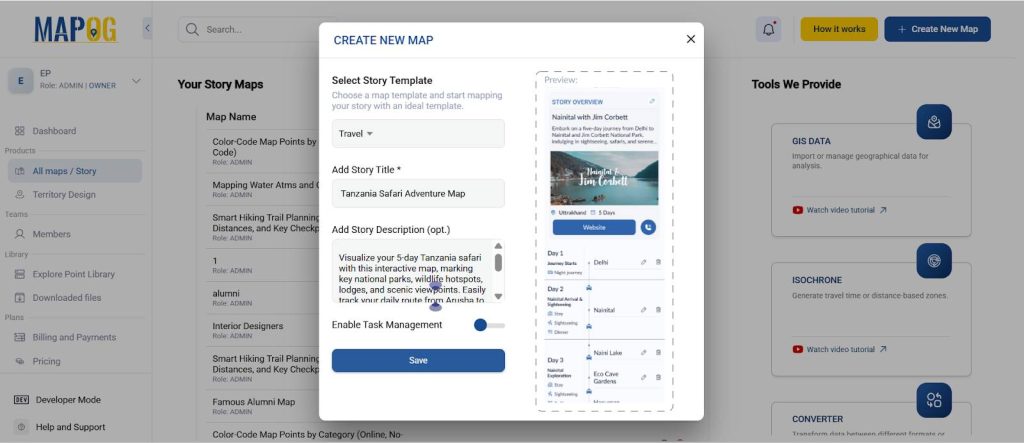
2. Add Story Point
First, go to Add Story → Add by Uploading CSV and upload your file with all safari locations. Next, for each point, include details such as the activity, the best time to visit, and a short description. Finally, by adding images of wildlife or lodges, you make the map more engaging and visually appealing.
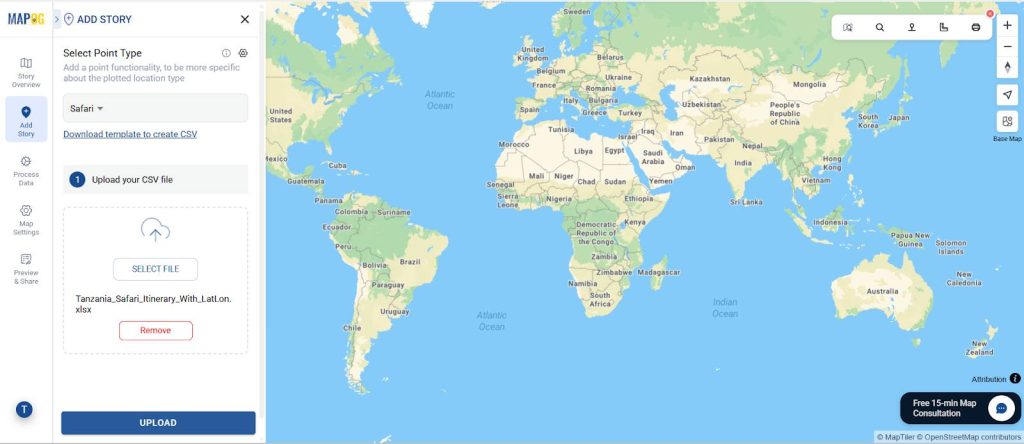
3. Enhance with Attributes
First, click Select Point and add the location type, then fill in the attributes. Next, for each location, create and add details such as point type (National Park, Lodge, or Scenic View), activity, day of visit, and special notes..
- Location Type: National Park, Lodge, Scenic View, or Cultural Site
- Activity: Game Drive, Wildlife Viewing, Bush Breakfast, or Optional Hike
- Day of Visit: Day 1–Day 5
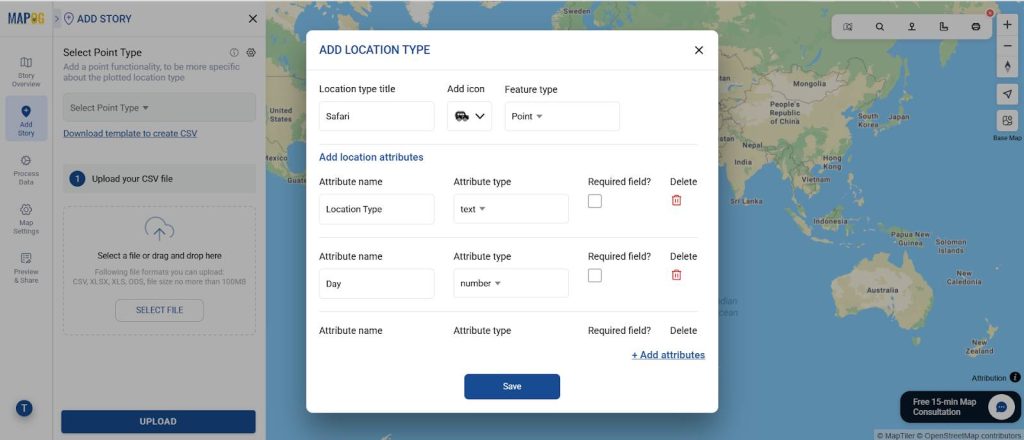
After creating the location points, click Upload. Then, match all Excel fields—from Title and Description to Latitude and Longitude—so that all safari locations are accurately uploaded onto the map.
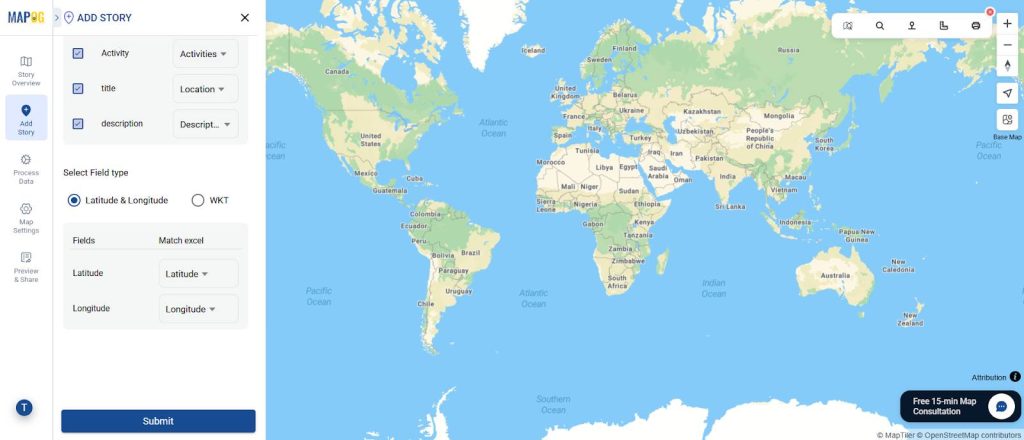
4. Document Travel Days
To organize your safari, use a day-based structure to indicate which day each location falls on (Day 1–Day 5). Next, go to Edit Point Details of the first point, click the Add Travel Day settings icon, and enter the day number, title, and details. Additionally, add notes about activities, meal timings, or special experiences—so that your itinerary is structured clearly and the interactive map is easy to follow. Next add safari images & save the point.
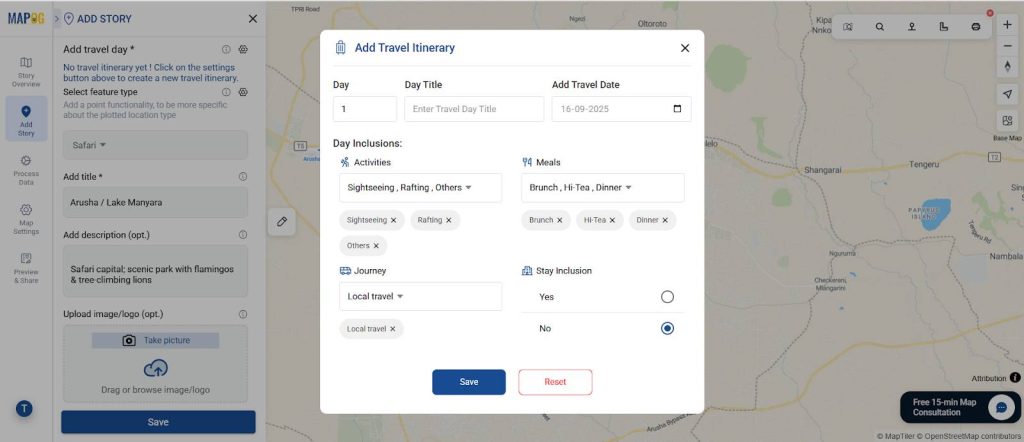
5. Customize Points and Connections
Use different icons and colors to distinguish parks, lodges, and viewpoints. First, in MAPOG, click Style Layer → Basic. Next, adjust the icon, color, size, and labels for each point. As a result, your safari map becomes visually clear, organized, and easy to follow.
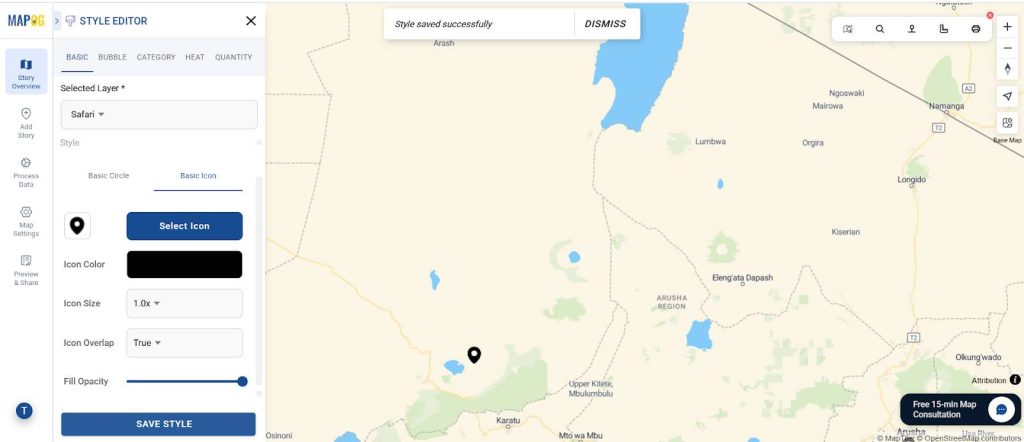
To show the daily route, first click on the points and go to Location Connections. Then, add routes and link the points. This way, you provide a visual representation of how your safari flows across different locations.
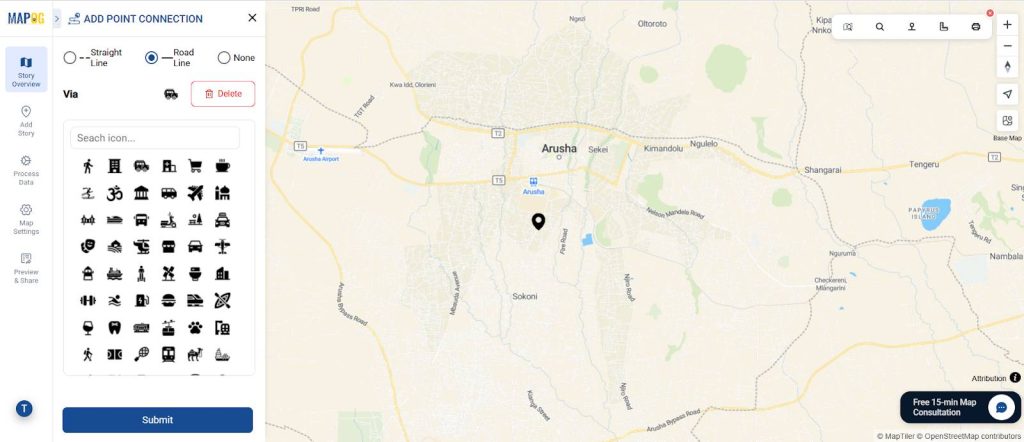
6. Preview and Share Your Safari Itinerary Map
Once your map is complete, you can preview and share it so that you check all points and connections. Furthermore, you may choose to make it public, share it privately or even embed it directly into your blog or website.
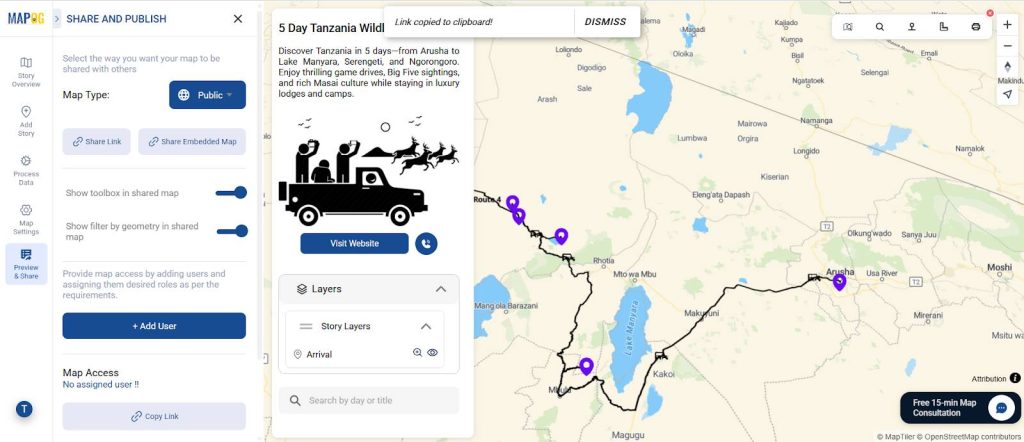
Broader Benefits of Travel Itinerary Map for Your Trip
- Better Planning: First of all, travelers can clearly see their route and timing, making journeys more organized.
- Interactive Storytelling: Moreover, they can share their travel experience in a visually appealing way.
- Enhanced Engagement: Finally, travel companions can easily explore points, activities, and photos, which makes the journey more memorable.
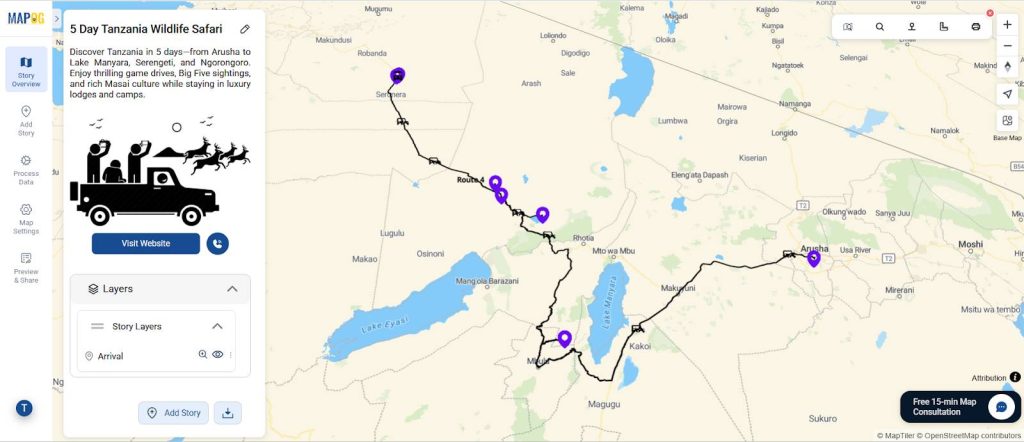
Conclusion
In conclusion, mapping your Trip simplifies planning and adds clarity, and furthermore it enhances storytelling, and moreover it boosts engagement, and therefore it makes your journey memorable and easy to share.